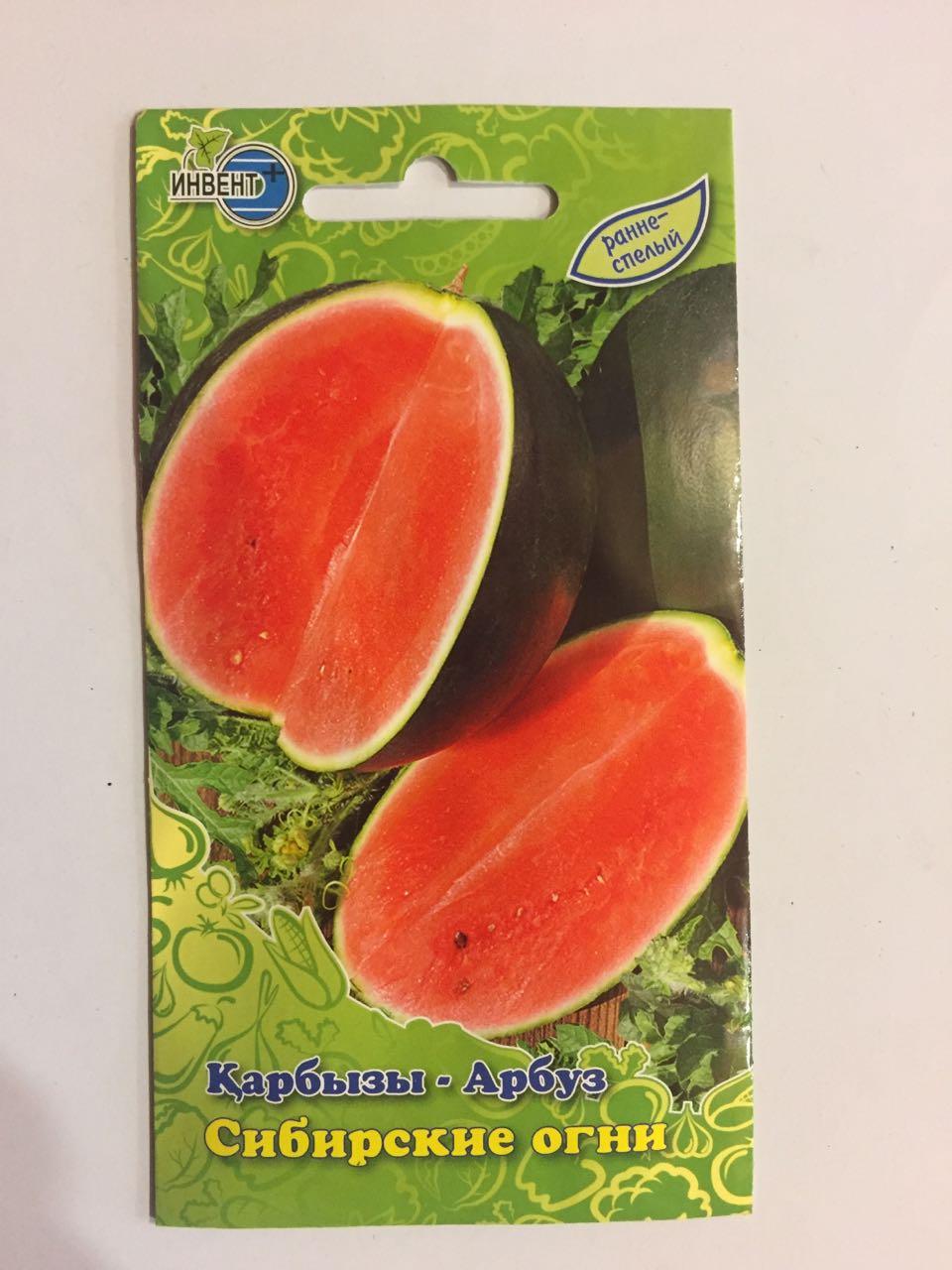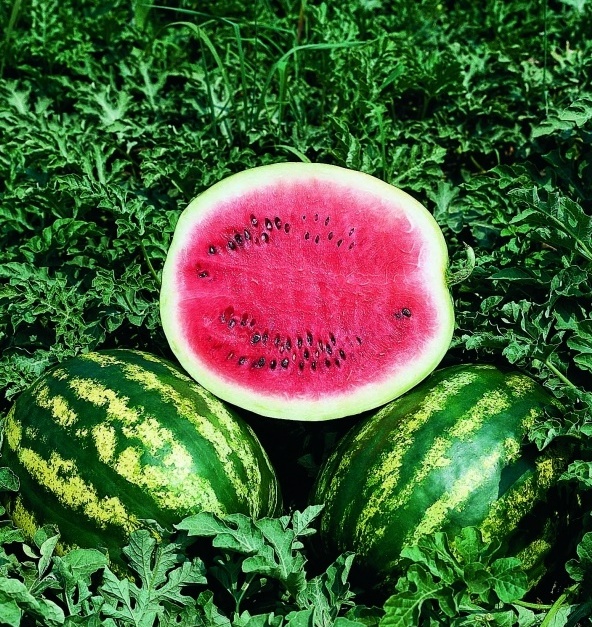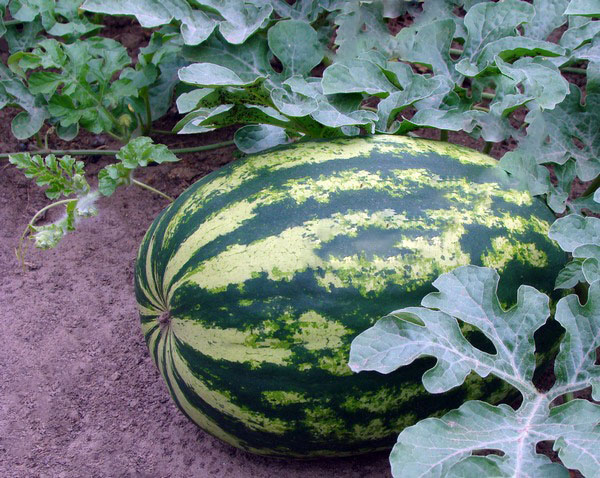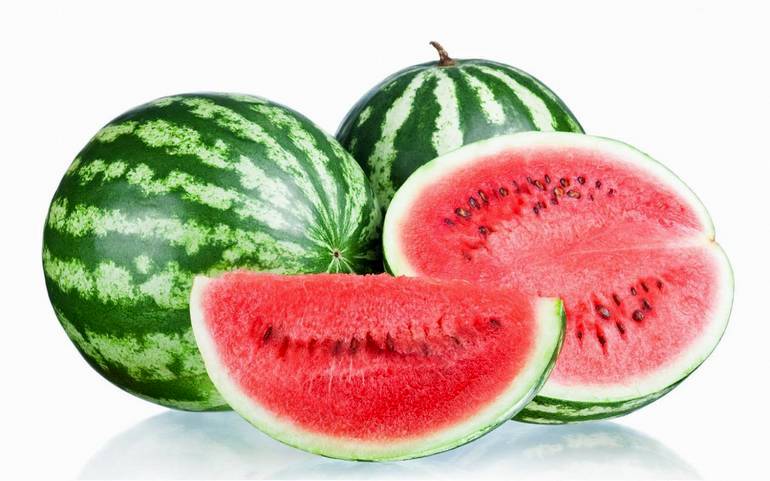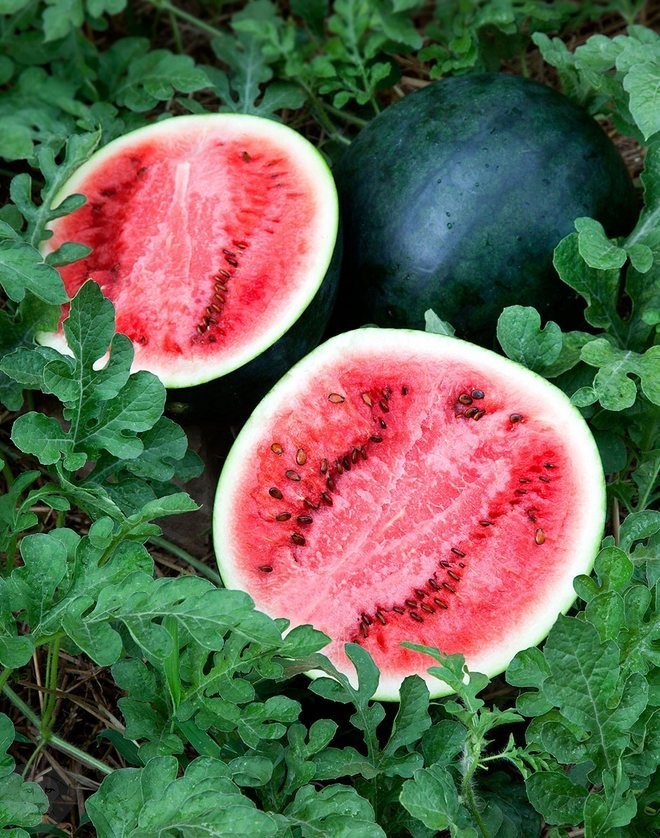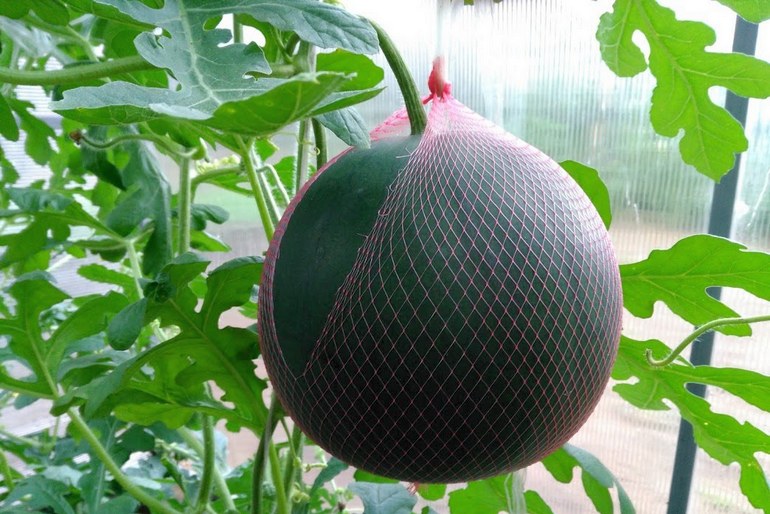Content:
It is believed that a number of vegetables, as well as melons and gourds, cannot be grown in central Russia, in the Moscow region, as well as in Siberia and the Urals. And so you sometimes want to pick a watermelon from the garden and immediately taste the sweet tasty fruit.
Through the efforts of breeders, many vegetables and melons and gourds were bred that can be grown even in the cool Siberian summer. These crops include the watermelon Sibirskie Ogni, a melon crop created specifically for the cold regions of Russia. The main positive qualities of the variety, cultivation features, description and characteristics - all this and much more will be discussed below.
Breeding history of the variety
This variety was bred by breeders working at the West Siberian Vegetable Experimental Station of the All-Russian Scientific Research Institute of Vegetable Growing. Watermelon Siberian Lights was bred specifically for cultivation in different regions of Siberia and areas equated to them with similar climatic conditions. There are other breeding firms that are engaged in the breeding of vegetables and melons (for example, the Novosibirsk branch).
The main thing that was emphasized when breeding the variety was early ripening, so that the fruits had time to ripen in the conditions of a short, cool summer, and their taste was high enough. And the specialists managed to bring out such a variety, which was almost immediately recognized by local vegetable growers - those who once planted it on the site subsequently planted the Siberian Lights watermelon every year.
The new variety was tested and in 2003 was entered into the State Register and zoned for cultivation in Siberia.
But there are other varieties of watermelons for Siberia, they are grown in the open field as successfully as Siberian fires:
- Charleston Gray;
- SRD-2 Superearly Dyutina;
- Photon;
- Ultra early;
- Siberian Giant and many other varieties of watermelons for growing in Siberia.
What other varieties of watermelons are grown in Siberia: you can plant the watermelon variety Siberian Rose, the watermelon variety Kai has proven itself well when grown in Siberia f1.
Characteristics and features of the variety
Over the years since its creation, the Sibirskie Ogni variety has become popular among amateurs to grow melons and gourds in the short Siberian summer.
Watermelon Siberian Lights is cold-resistant, belongs to early-ripening varieties - 2.5-3 months pass from the moment the sprouts appear until the fruits ripen. Other positive qualities of this watermelon are its resistance to temporary drops in temperature and to drought.
There is also a high resistance to fusarium and other infectious and fungal diseases.
This melon plant is intended for cultivation in the open field, as well as in a greenhouse.
Important! The variety can be grown in the Western and Eastern Siberian regions.
Description of the plant: bushes are medium-growing, the main lash grows to 2.3-2.5 m in length. The foliage is medium-sized, gray-green in color, strongly dissected.
The main characteristics of ripe fruits: ripe watermelon has a wide elliptical shape, smooth, weight ranges from 1 - 2.5 kg. On the dark green background there are stripes of black-green tones, which are hardly noticeable against the main background. The bark of a ripe fruit is thin, its thickness is 0.6-1.6 cm, it bends easily, at a break it is white. The flesh of a watermelon is deep red, juicy, very sweet. The taste is excellent. The dry matter is up to 7.4-7.7%, the amount of sugar is 7.2-7.3%.Watermelon juice is very sweet, with the characteristic aroma inherent in this melon culture.
Seeds are oblong-elliptical, slightly smaller than average size, rich black color, covered with skin.
The variety perfectly tolerates transportation and long distances. Watermelon Siberian Lights is high-yielding. The harvested crop retains its marketability and taste for three weeks.
Features of planting and growing varieties
Cultivation of watermelons Siberian Lights in the open ground and in greenhouse conditions can be carried out in the following ways:
- reckless;
- preliminary cultivation of seedlings at home, followed by planting seedlings in a permanent place.
With a seedless method of growing this variety, there is a risk of not waiting for the harvest in the short cold summer season in Siberian regions. Therefore, melon growers prefer to first grow strong strong watermelon seedlings at home and only then transplant them to a permanent place.
To grow watermelons through seedlings, you need to prepare containers for planting and soil. It is necessary to plant seeds in the ground for seedlings in the third decade of April, in this case, the seedlings will not have time to outgrow before transplanting to the beds.
How to plant watermelons in Omsk (Novosibirsk, Barnaul, etc.)? It should be noted that the planting method in the regions of Eastern and Western Siberia is the same - through preliminary cultivation of seedlings. The fact is that the nature of the climatic conditions in these regions is approximately the same, therefore, you need to plant seeds first at home, and only then transplant the sprouts into open soil.
Important! When growing watermelons, one should not forget about the basic rules of crop rotation. In one place, the Siberian Lights variety can be grown next time after 3-4 seasons. The best predecessors for him are potatoes, beans, peas, soybeans, any varieties of cabbage.
In the fall, you should start preparing the beds in the greenhouse or garden for this melon culture. To do this, they dig trenches and lay organic matter in them:
- horse or cow manure;
- humus;
- rotted compost.
If manure has not been placed in the beds since the fall, it should be put there in the spring, before planting watermelon seedlings. But in this case, the fertilizer should be well rotted.
Even in June, the weather in the Siberian regions is unstable, there may be frosts on the soil, so seedlings planted in open ground should be covered with polyethylene at night.
Planting holes for watermelon seedlings are dug at a distance of 1 m from each other.
After planting mature seedlings in open ground or in greenhouses, further care for them consists in the following procedures:
- watering;
- loosening the soil;
- feeding;
- mulching;
- removal of weeds.
This variety of watermelon does not need frequent watering, it is enough to water them once every 6-7 days, and 30 days before the harvest is fully ripe, watering is stopped altogether. They are replaced by the introduction of liquid dressings "under the root", which should include potassium and phosphorus.
The bushes of this melon culture require formation: for this, no more than three strongest shoots are left on each of the bushes, on which the crop will ripen. All other stepsons must be removed.
Advantages and disadvantages of the variety
The main advantages of this variety include:
- early ripening of the crop (from the moment of emergence to harvest, 2.5-3 months pass);
- excellent presentation and good taste of ripe fruits;
- high resistance to temporary cold snaps, as well as to drought;
- watermelon is resistant to most infectious and fungal diseases, as well as fusarium;
- ripe fruits perfectly tolerate long-distance transportation.
There are practically no disadvantages of this variety. When grown in greenhouses and open ground, the lashes of this melon crop should be tied to trellises. Experts recommend using the fan-shaped tying method for this.
